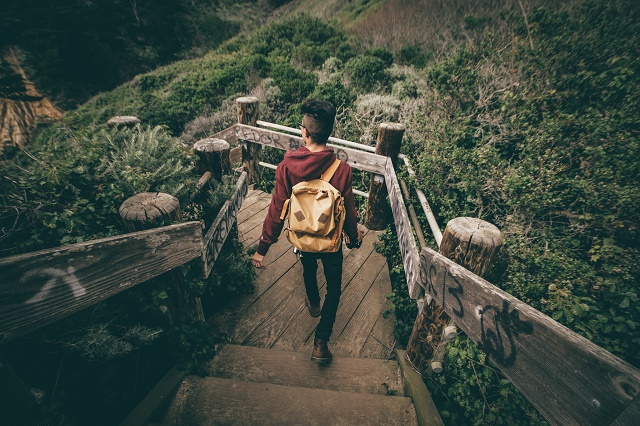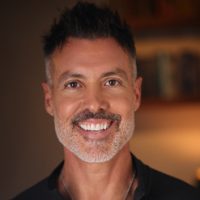James was my friend’s brother and best friend—he passed away last month from a heroin overdose.
He was 25 years old.
James was many things, he was a brother, a friend, a son, and most importantly, a life—a fellow human being.
He was also gay.
When I heard about James’ death, I immediately wondered if it had anything to do with drugs. I didn’t really know much about James, but I also wondered whether or not he was gay. I’m personally familiar with the relationship between shame and addiction. I see it in the work I do, I’ve seen it in my family, and I’ve even experienced it in my own life. Intuitively, I felt there was a connection.
When I met my friend for coffee, he confirmed that the demons that James was battling, which eventually resulted in his untimely death, had a lot to do with the shame around his sexuality.
James went to Juvenile Hall when he was 15. My friend said his life was never the same. He experienced significant abuse and trauma, including being beaten up and raped by the other kids, as well as the guards.
An article published recently on the Huffington Post says, “Lesbian, gay, bisexual and transgender people are disproportionately jailed in federal and state prisons.” The article references a recent report released by the Movement Advancement Project and speaks specifically about the unfair treatment LGBT people receive within the system.
My mom sent me that article right before I was going to give a presentation to the Mental Health Department at Los Angeles County Juvenile Hall. I was invited to speak there and address the concerns they have around the abuse and discrimination that LGBT youth face on a daily basis while incarcerated.
I met a gentleman from Juvenile Hall at a conference last year who I had approached after hearing a story he shared about a Catholic Priest who visited the youth in Juvenile Hall. Upon finding out that one of the youth was a transgender female, the priest walked up to the young girl, took her hand and placed it at her heart and said, “you need an exorcism, may God be with you.”
The argument is no longer about whether or not homosexuality or transgender is a choice, it is about whether or not we are validating the life of a child.
When children’s lives are in the balance, we have to address our biases and our beliefs.
Regardless of what institutions or individuals say, when it comes to homophobia or something that we don’t understand, projecting our fears onto a human being isn’t the answer. Questioning our beliefs is.
The Rule of Expectations says that individuals tend to make decisions and perform based on how others expect them to perform. We tend to play out in our lives what others expect of us.
This goes beyond individuals, and touches not just our lives, but those of others and the wider communities of which we’re a part. We impact those around us based on what we believe and expect through our language, our voice inflections, our body language, our thoughts, and our awareness.
Just the other day I was at the grocery store and I noticed a woman speaking to an elderly man like he was a child. He appeared to be a completely able-bodied and competent man, but her tone and the way she was speaking to him implied that she didn’t see him that way. I thought about all the times I interact with people, how my beliefs and expectations of them actually influence how they show up.
We are responsible for our actions, however, when we explore our beliefs and create new expectations, we have the power to change other people’s behavior.
When it comes to things like age, race, sexuality, gender, or socio-economic status, according to the Rule of Expectations, my beliefs have an affect on you and how you show up in the world.
Another study from the William’s Institute shows that in the Los Angeles County child welfare system, 19 percent of youth identify as gay or lesbian and 17 percent identify as transgender. Some of the other findings were that, “LGBTQ youth have a higher average number of foster care placements and are more likely to be living in a group home. They also reported being treated less well by the child welfare system, were more likely to have been hospitalized for emotional reasons at some point in their lifetime, and were more likely to have been homeless at some point in their life.”
According to the William’s Institute, 40 percent of homeless youth nationwide are LGBT.
I mentor a young man, Mike, who just turned 18 and is a senior in high school. He’s also exactly who I just described. He’s been living in a group home since he was 15 because of the emotional and physical abuse he experienced in his childhood as a result of his sexuality. He’s had a few attempted foster care placements, but nothing permanent. There are many more like Mike who will also graduate, get jobs, and live in our communities.
They are the future. Regardless of their treatment or our beliefs about them, they are members of society. They make decisions and will make decisions that affect our lives in ways we may never realize.
The number one goal for any child in foster care is permanency. One of the key findings from the LA County Child Welfare System’s study was that, “improving permanency outcomes for LGBT youth requires a multi-pronged approach that examines how oppressions operate at structural and institutional levels.”
One of the ways in which to do this, according to the report, is to, “address the roles that racism, heterosexism, and anti-trans-bias play in creating disparities for LGBT youth in foster care.”
In order for us to improve any outcome, we have to address the cause. But before we can make any changes within ourselves, our lives, or our communities, we first need awareness.
The blanket percentages I shared from reports done by researchers to emphasize a point are actual people. These are the lives of children who are being discarded and disowned from families and institutions because they’re gay, lesbian, or transgender. They’re the lives of people we may see on the street, interact with at the grocery store, or talk to at a restaurant in our own neighborhood. They’re the lives of our friend’s family members. They’re the lives of fellow human beings.
Mike just got a job at a local restaurant and I wondered how many people know his circumstance. How many people has he waited on have any idea that he was literally removed from his home because it was unsafe for him to be himself. The same person who was hired, is taking someone’s order, ringing them up, and telling them to have a nice day, was at one time being abused for being just that…himself.
This is a call to us all to really explore our own biases and our own beliefs.
When you meet someone, do you have a bias about who they are or how they act? Do you think the messages you heard growing up about someone’s sexuality have impacted how you treat them? If so, how? If not, I’d encourage you to look a little deeper. Not only do our actions matter, but so do our beliefs.
Something interesting that I learned recently from a study that was done around racism and homophobia is that showing images of African American people doing positive deeds in a positive way helped to combat racism—it actually helped shift an individual’s racist beliefs. However, showing images of LGBT people doing positive deeds and in a positive way didn’t help to change homophobic beliefs. The only way to change a person’s homophobia was for them to get to know someone personally.
I hope that in sharing this story, it might allow more people to connect with James, and Mike and their stories, which are just some of many, many more like them.
I didn’t know my friend’s brother, James, personally, but the biases and beliefs that he experienced in his life have affected mine. And, hopefully, they’ve now affected yours.
When we live on this planet together—billions of people coexisting—we have to realize that the life of one is the life of all.
~ In honor of James and all lives affected by homophobia. ~
~
Author: Chris Tompkins
Editor: Khara-Jade Warren
Image: Aaron Alvarado/ Unsplash
~
~









Read 2 comments and reply